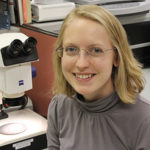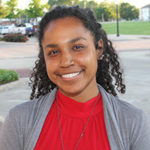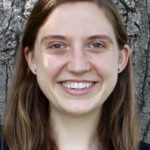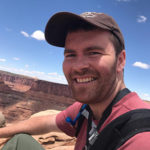Congratulations to Hojun Song, Ph.D., Mary Reed and Jennifer Rhinesmith-Carranza who received Vice Chancellor Awards in Excellence this year. These awards recognize the commitment and outstanding contributions displayed by faculty, students and staff members across Texas A&M AgriLife.
Teaching Awards
The Teaching Award was presented to Hojun Song, Ph.D., associate professor, Department of Entomology. Song is a dedicated and creative instructor who integrates his research expertise in insect systematics and locust biology into his classes. Recognizing the need for an undergraduate field entomology course, Song began a hands-on study-abroad course in tropical field entomology in Costa Rica. On this study abroad, a group of his students discovered a new species of king cricket. Song guided them through describing this species, leading to a published paper with the students as authors. When an online teaching format was necessary during the COVID-19 pandemic, a graduate student said Song offered clear and interesting lectures with practical exercises and activities that made the course fun and dynamic. The student continued, “The teaching strategies Dr. Song used improved my learning and made this class my favorite graduate-level course.”
The Graduate Student Teaching Award was presented to Jennifer Rhinesmith-Carranza, academic advisor and assistant lecturer and doctoral candidate, Department of Entomology. Although employed full-time as an advisor with the College of Agriculture and Life Sciences, she also serves as a teaching assistant and assistant lecturer for a wide range of forensic science and entomology courses. In 2019, she was recognized by the department as the Forensic Science Teaching Assistant of the Year. An outstanding mentor, she helps students apply for internships with the FBI, reviews resumes and cover letters for graduates and helps students prepare for national certification exams. In addition, she is one of six certified technicians on the American Board of Forensic Entomology and organizes workshops to teach law enforcement how to process entomological samples associated with crime scenes.
A full list of awards was announced in AgriLife Today.
 Angelica Rodriguez is the second oldest out of 5 children and a first-generation college student. She enjoys being active whether it’s dancing around her apartment, going to the student rec, or simply going for a walk. She will be graduating in spring 2021 with a Bachelor’s of Science in Entomology and a minor in Wildlife & Fisheries. She enjoys nature and would like to use her degree to work with wildlife and/or exotic animals.
Angelica Rodriguez is the second oldest out of 5 children and a first-generation college student. She enjoys being active whether it’s dancing around her apartment, going to the student rec, or simply going for a walk. She will be graduating in spring 2021 with a Bachelor’s of Science in Entomology and a minor in Wildlife & Fisheries. She enjoys nature and would like to use her degree to work with wildlife and/or exotic animals.

 To control mosquito populations and prevent them from transmitting diseases such as malaria, many researchers are pursuing strategies in mosquito genetic engineering. A new
To control mosquito populations and prevent them from transmitting diseases such as malaria, many researchers are pursuing strategies in mosquito genetic engineering. A new 





















 Congratulations to former Professor and Extension Specialist Dr. Mike Merchant as he was named an honorary member of the Entomological Society of America in 2020.
Congratulations to former Professor and Extension Specialist Dr. Mike Merchant as he was named an honorary member of the Entomological Society of America in 2020.

































 The Department of Entomology would like to congratulate Ph.D. candidate Jennie Rhinesmith-Carranza for her hard work in advising students in the Department of Animal Science this year.
The Department of Entomology would like to congratulate Ph.D. candidate Jennie Rhinesmith-Carranza for her hard work in advising students in the Department of Animal Science this year. Texas A&M AgriLife Extension Service
Texas A&M AgriLife Extension Service

 Cornell is an Entomology major with a minor in Public Health from San Antonio. He was a member of the Corps of Cadets and served as Scholastic Officer. He was a member of Army ROTC, the AMC Honor Guard and O.R. Simpson organization within the Corps of Cadets. Jordan was a volunteer with Connecting Point Church where he was a lead classroom teacher for Pre-school Sunday School and with Robyn’s N.E.S.T. program for young children.
Cornell is an Entomology major with a minor in Public Health from San Antonio. He was a member of the Corps of Cadets and served as Scholastic Officer. He was a member of Army ROTC, the AMC Honor Guard and O.R. Simpson organization within the Corps of Cadets. Jordan was a volunteer with Connecting Point Church where he was a lead classroom teacher for Pre-school Sunday School and with Robyn’s N.E.S.T. program for young children. Conner is an Entomology major from Rowlett, Texas Marina was a member of the Corps of Cadets where she served as Public Relations Corporal in 2017-18, Scholastics Sergeant and Squad Leader in 2018-19 and Scholastics Officer and Squad Leader in 2019-20. She was also a member of the Fightin’ Texas Aggie Band for four years and was chosen for ceremonial bands for both President George H. W. Bush’s funeral and Governor Greg Abbott’s Inauguration. She served as a host for Texas A&M Korean Guest Exchange Program for January/February 2019 and 2020 and served as primary contact to Korean cadets for their month long stay at Texas A&M.
Conner is an Entomology major from Rowlett, Texas Marina was a member of the Corps of Cadets where she served as Public Relations Corporal in 2017-18, Scholastics Sergeant and Squad Leader in 2018-19 and Scholastics Officer and Squad Leader in 2019-20. She was also a member of the Fightin’ Texas Aggie Band for four years and was chosen for ceremonial bands for both President George H. W. Bush’s funeral and Governor Greg Abbott’s Inauguration. She served as a host for Texas A&M Korean Guest Exchange Program for January/February 2019 and 2020 and served as primary contact to Korean cadets for their month long stay at Texas A&M. Harlee Schneider is a Forensic & Investigative Sciences major from Bastrop, TX. She was a member the of Entomology Scholars Society and the Aggie Forensic and Investigative Sciences Organization (AFIS). As a member of AFIS, she volunteered with the Chemistry Open House in 2017, 2018 and 2019. She was also a member of Texas A&M Cupcakes, a non-profit organization that hosts bake sales to benefit the Brazos Valley Food Bank. Schneider also volunteered for the Youth Adventure Program hosted by the Entomology Department to teach high school students about a variety of forensics topics. She served as a Peer Notetaker for Disability Resources.
Harlee Schneider is a Forensic & Investigative Sciences major from Bastrop, TX. She was a member the of Entomology Scholars Society and the Aggie Forensic and Investigative Sciences Organization (AFIS). As a member of AFIS, she volunteered with the Chemistry Open House in 2017, 2018 and 2019. She was also a member of Texas A&M Cupcakes, a non-profit organization that hosts bake sales to benefit the Brazos Valley Food Bank. Schneider also volunteered for the Youth Adventure Program hosted by the Entomology Department to teach high school students about a variety of forensics topics. She served as a Peer Notetaker for Disability Resources.











 Congratulations to Senior Academic Advisor IV
Congratulations to Senior Academic Advisor IV 

 The Department of Entomology and Texas A&M AgriLife Extension Service welcomes Dr. John Thobe as the new integrated pest management agent for Bailey, Castro and Parmer counties.
The Department of Entomology and Texas A&M AgriLife Extension Service welcomes Dr. John Thobe as the new integrated pest management agent for Bailey, Castro and Parmer counties. At this time, there is no scientific evidence that COVID-19 is transmitted by mosquitoes and ticks, explained
At this time, there is no scientific evidence that COVID-19 is transmitted by mosquitoes and ticks, explained 















 Congratulations to professor emeritus Dr. Bob Wharton as he received the Department of Entomology’s Lifetime Achievement Recognition.
Congratulations to professor emeritus Dr. Bob Wharton as he received the Department of Entomology’s Lifetime Achievement Recognition.
























































































































 Professor and Endowed Chair for Urban and Structural Entomology Dr. Edward Vargo was interviewed in a recent New York Times article on the discovery of all-female termite societies in Japan. Such colonies are produced without sexual reproduction.
Professor and Endowed Chair for Urban and Structural Entomology Dr. Edward Vargo was interviewed in a recent New York Times article on the discovery of all-female termite societies in Japan. Such colonies are produced without sexual reproduction.














































































































































 COLLEGE STATION—Several Entomology students celebrated the holiday season early as they were part of more than 4,000 students expected to graduate this fall during commencement ceremonies at Reed Arena on Friday, December 16.
COLLEGE STATION—Several Entomology students celebrated the holiday season early as they were part of more than 4,000 students expected to graduate this fall during commencement ceremonies at Reed Arena on Friday, December 16.



















































 COLLEGE STATION, Texas – The Department of Entomology celebrated the achievements of Sherry Boyd during a reception held in the fourth floor atrium on Wednesday, March 2016.
COLLEGE STATION, Texas – The Department of Entomology celebrated the achievements of Sherry Boyd during a reception held in the fourth floor atrium on Wednesday, March 2016.





































 For junior Entomology major Colby Shodrock his dream of working at a pest control company came true as he got to intern in Georgia for the Orkin Internship program during this summer.
For junior Entomology major Colby Shodrock his dream of working at a pest control company came true as he got to intern in Georgia for the Orkin Internship program during this summer.































































































































































